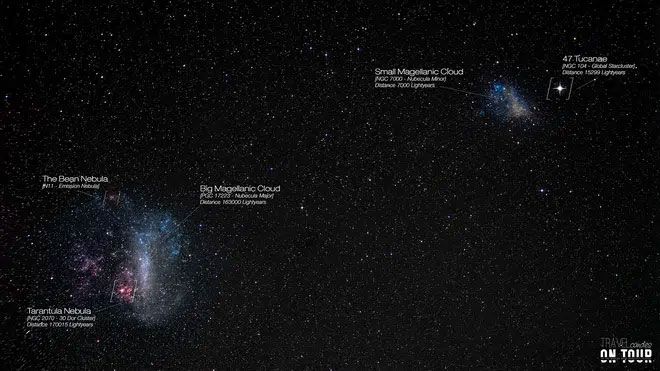About 85% of the matter in the universe is “dark matter”, which cannot be studied by direct observation by electromagnetic waves, but this mysterious matter will have a huge impact on the universe. What are these weird things? How to study it? What does this have to do with human existence?
In 2019, a joint event hosted by TED and the National Academy of Sciences invited Risa Wechsler, a physicist at Stanford University, to share her research on dark matter. Risa is Professor of Particle Physics and Astrophysics at SLAC National Accelerator Laboratory and also Director of the Kavli Institute of Astrophysics and Space. In the speech, Risa explains why dark matter can be a key factor in understanding the formation of the universe, while also sharing how physicists in laboratories around the world are giving methods to study them.
In ancient China, the needle, wood, water, fire, and earth were used as the building blocks for studying the formation and relationships of all things in the world. With the advancement of modern science and technology, people know that cosmic matter is made up of molecules, atoms, protons, and other particles. These substances can be observed from galaxies, planets, gas, dust, organisms, etc.
“Matter” is only 15% of the matter in the universe, the remaining 85% neither absorbs nor emits light at all, we cannot observe them with the naked eye and can hardly detect them by electromagnetic waves or other visible light. These are called dark matter. Dark matter is a rather abstract concept and cannot be concretely imagined, but science today assumes that dark matter exists everywhere, even next to us.
To understand how dark matter affects humans, we must first understand the origin of the Milky Way.

After the big bang, the universe grew very quickly.
Less than a second after the Big Bang, the universe has grown very rapidly and all matter has been created at this point. About 400,000 years after the Big Bang, the universe was hot, dense, and thin, but the mass distribution of matter was uneven. In this process, dark matter plays a very important role, bringing together these points of insufficient mass.
To the left is a cosmic model filled with dark matter and to the right a cosmic model devoid of dark matter.
In the dark matter universe, the mass accumulation increases rapidly and easily forms galaxies, the Universe lacks dark matter only has matter with a small mass so it will only maintain the initial state, and the change will be relatively small. Therefore, dark matter determines the origin, formation and evolution of galaxies in the universe. In a universe without dark matter, the auto-gravitational system is difficult to form, there will be no large galaxies like the band. Milky Way, and the probability of forming a galaxy suitable for the organism is greatly reduced. Of course, no human or other living thing will appear. Dark matter is therefore the “creator of the universe”, without it, we would not have existed.
Most physicists believe that dark matter is some kind of particle, similar in many ways to the subatomic particles we know of, such as protons, neutrons, and electrons. Physicists and astronomers have tried many methods to find invisible particles of dark matter. There are currently three methods to detect dark matter, such as: a detector in an underground laboratory, a detector on the ground or in space, and through the Large Hadron Collider (LHC) which generate particles of matter.
We can imagine that many different particles from the universe hit the Earth like a summer downpour. Detecting invisible dark matter particles in a stadium is as difficult as spotting a needle falling to the ground. To keep all kinds of cosmic particles from being noisy, scientists often use extremely deep underground labs, which are excellent environments for conducting basic and advanced physics experiments.

Many countries have used mines and deep tunnel laboratories to build sensitive dark matter detectors, wait for dark matter particles passing through the Earth to collide with denser matter, and hope to find clues of dark matter.
The Jinping Mountain Dark Matter Laboratory in Sichuan, China, located more than 2,400 meters underground, is the deepest laboratory in the world and can protect large amounts of cosmic rays. If you’re lucky, a lab reactor can track dark matter particles passing through rock. After the Jinpingshan Mountain Laboratory (Jinpingshan) was completed and put into operation in the first stage, the scientists obtained a series of research results, successfully eliminated some research directions for dark matter, and restricted the scope of research. The second phase of the project will install a more powerful super-detector capable of detecting particles of more sensitive matter.
If the underground experiments mainly carry out direct detection of dark matter, that is, the detection of collisions between particles of dark matter and ordinary matter, then the space equipment is the process of indirect detection, very different from physical assumptions based on direct ground detection.
Physicists believe that high energy particles will be created after the dark matter particles collide. Dark matter satellite detectors attempt to accurately detect these particles and find evidence for the existence of dark matter particles across their energy spectrum and spatial distribution. Currently, the most well-known dark matter detectors in the world include the American Fermi satellite, the Alpha AMS-02 magnetic spectrometer and China’s “Wukong”.
Scientists are also trying to use Switzerland’s Large Hadron Collider to collide particles with each other and see if dark matter can be produced. The accelerator can accelerate subatomic particles to near the speed of light, then collide them with each other to produce a variety of particles, including dark matter particles. However, even with the most powerful particle accelerator in service, no sign of dark matter has been found so far, one of the reasons may be due to the capacity and speed of the existing accelerator. . Did not reach its ideal value.

The Large Hadron Collider (LHC) in Switzerland is the largest particle collider in the world. Now it is at the “late afternoon” age. Scientists hope to design and launch a more powerful particle accelerator. The European Nuclear Research Center (CERN) plans to install a 100 km circular super-collider in Switzerland to be built in the Geneva tunnel. The energy of the proton collision will be six times that of the current LHC collider, in order to advance advanced research in high energy physics.
For frontline scientists exploring dark matter, the search for a substance filled with this unknown, whether on the ground or in space, requires a variety of advanced detectors to collect more data and remove more ‘hypotheses. Then they can find the right direction to understand dark matter. So far, the aforementioned results have made progress, but these observations have not yet clarified what dark matter is, there is still a long way to go and scientists are still diligently researching the answer.
 Scientists have not yet clarified what dark matter is.
Scientists have not yet clarified what dark matter is.
Without dark matter, our Milky Way would cease to exist. The way galaxies change, distribute themselves and move around the universe is related to dark matter. Therefore, we can test some predictions about dark matter by observing galaxies.
First, scientists can use galaxies to map the universe. The “Dark Energy Survey” project established the largest map of the universe to date, measuring the position and shape of nearly 100 million galaxies covering one-eighth of the sky.
The cosmic map shows us all the matter in that region of the sky showing distorted light as it passes through matter between these galaxies and our Earth – the gravitational force of matter is strong enough to bend the path of light.
This type of sky study can tell us about the mass of dark matter, as well as the approximate location of dark matter and how it changes over time, to better understand the makeup of the universe.
In addition, the smallest galaxies in the universe also provide good clues.
In theory, dark matter can be divided into hot dark matter (HDM), hot dark matter (WDM), and cold dark matter (CDM). Hot dark matter moves faster, while cold dark matter moves slowly. Hot particles of dark matter are moving fast, and gravity in the galaxy is not enough to slow it down. The small fragments of dark matter around the Milky Way galaxy will gradually decrease, so the satellite coefficient in these small fragments of dark matter will also decrease. So, by measuring the number of satellite galaxies, scientists can distinguish these types of dark matter.
 Dark matter is hot on the left, dark matter is cold on the right.
Dark matter is hot on the left, dark matter is cold on the right.
If we look at the southern night sky in good weather, we can see two small galaxies in the real environment, which surround the Milky Way, the Large Magellanic Cloud and the Small Magellanic Cloud.
In recent years, scientists have discovered many very small galaxies using the dark energy sensing capabilities used to map the universe. Some only contain a few hundred stars. Compared to the hundreds of billions of our Milky Way, these small galaxies are very difficult to find from nebulae.
We now know that there are 60 small galaxies orbiting the Milky Way. These are important clues for us to dig deeper into dark matter.
 Dark matter remains a great mystery, but his research is even more interesting.
Dark matter remains a great mystery, but his research is even more interesting.
Dark matter is a very popular area of research in the fields of particle physics and contemporary astrophysics. In the future, scientists will map the sky more accurately to improve our understanding of entire galaxies and the universe. Dark matter remains a great mystery, but his research is even more interesting. As the level of science and technology increases, this research will become more and more intensive, people will gradually unravel the mysteries that can give us a new understanding of physics theory and discoveries. human position in the universe.


